Are Metal Cribs Safe for Babies?
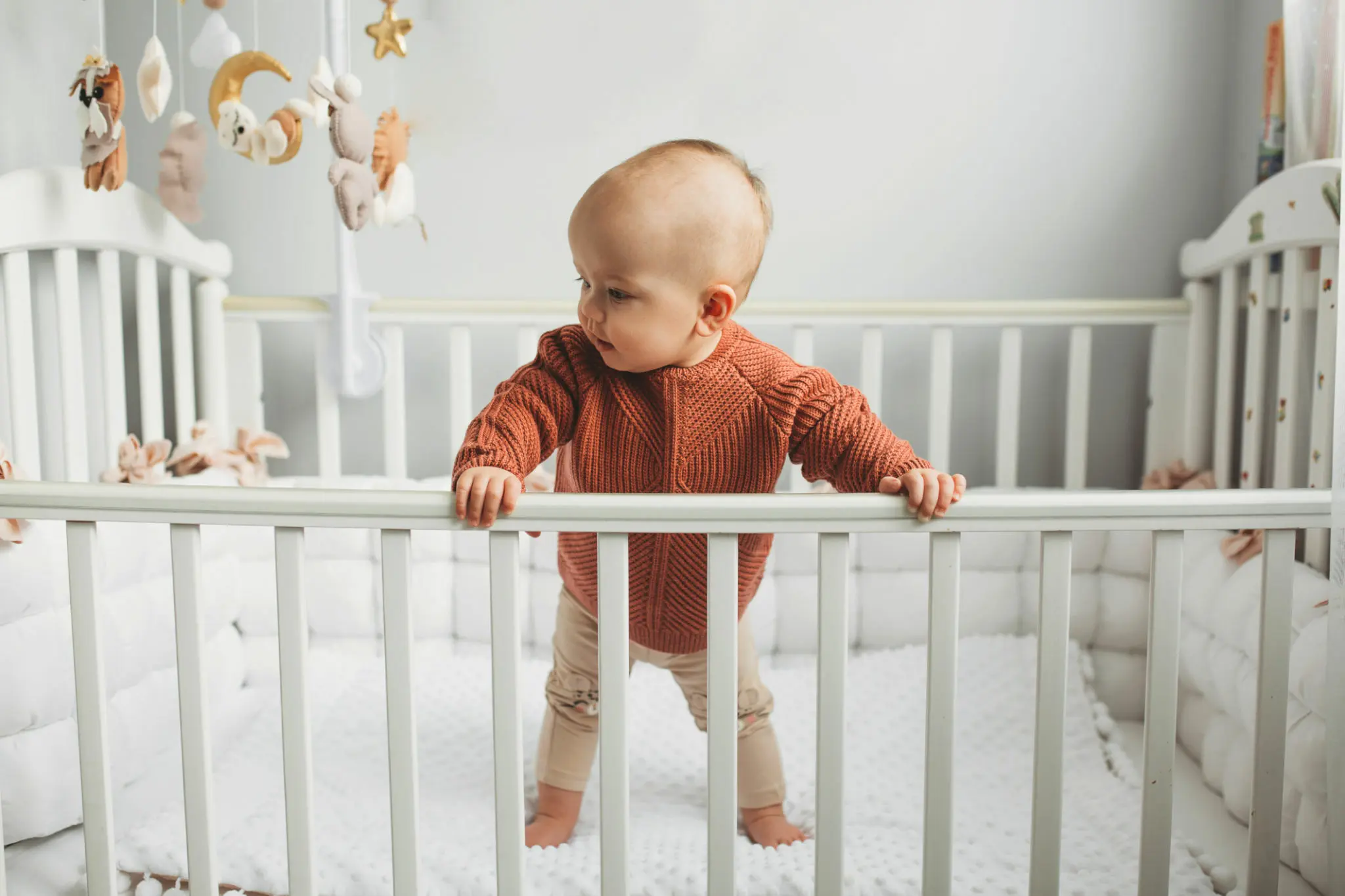
As an expectant parent, you spend countless hours researching every purchase for your nursery, especially your baby’s crib. You want to ensure your little one has a safe and comfortable bed.
Metal cribs, including those made from iron, aluminum, or steel, are a popular choice due to their durability, longevity, and style. However, questions come up about whether metal cribs adequately protect infants while meeting today’s safety guidelines.
In this comprehensive article, we’ll examine metal crib safety from all angles. You’ll learn about proper construction standards, materials, and design features to look for.
We’ll also dive into extra safety precautions you can take and compare metal against other crib varieties. Arm yourself with in-depth knowledge so you can decide if a metal crib is the best pick for your nursery.
Are Metal Cribs Safe? What to Look For

The priority when shopping for any crib is ensuring it meets the latest safety requirements. The Consumer Product Safety Commission (CPSC) regulates crib manufacturing and sales in the U.S. Their rules dictate crucial construction details for metal cribs and other materials to reduce injury risks. Key factors to evaluate include:
Slats Spacing

Crib slats, the vertical bars that make up the sides, should stand no more than 2 3/8 inches apart. This spacing prevents your baby’s body from slipping between slats and becoming entrapped, which could strangle or suffocate them. Reputable metal cribs on the market today adhere to this accepted standard.
Tight-Fitting Mattress

A major safety concern is the open space between the mattress and crib frame where your baby could get stuck.
Check that you can’t fit more than two fingers width between the mattress edge and crib side. Quality metal cribs often have adjustable mattress positions to customize the height as your baby grows.
No Loose Hardware or Decorative Cutouts
Avoid metal cribs with fancy decorative shapes cut into the bars or corner posts, which could trap your baby’s clothing or body parts. Protruding or loose bolts, screws, knobs, or other hardware also pose safety issues. Opt for a metal crib with simple, straight bars.
Locking Wheels and Reinforced Sides
Cribs with casters should have locks to prevent rolling. Check that metal cribs have reinforced sides and a wide, stable base designed to remain fixed in place. No wobbling or movement should occur when you push on corners.
What If Your Baby Chews on Metal Crib Bars?
Once babies begin teething, they start exploring their surroundings by putting everything in their mouths. Chewing or gnawing on metal crib bars is par for the course and generally isn’t hazardous.
As long as the crib’s paint or coating adheres to today’s lead-free, non-toxic standards, metal is too tough for your baby to bite off fragments that could choke them or damage their gums.
Teeth marks on metal bars don’t compromise the crib’s sturdy structure either. So while you may wish to deter babies from chewing metal, it usually isn’t dangerous.
Are Antique Metal Cribs Safe?

Gorgeous antique brass, iron, or steel cribs command premium prices for their ornate designs, detailing, and standalone craftsmanship. However, vintage and antique cribs lack modern safety upgrades. Here are the top concerns:
Say No to Drop-Side Cribs
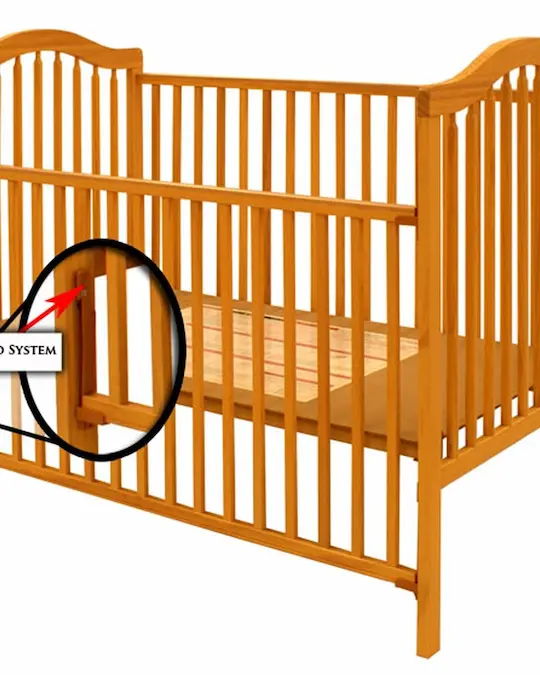
Many older metal cribs feature decorative drop-sides to make placing your baby inside convenient. But drop-sides were also prone to unlatching unexpectedly and pinching, crushing, or even suffocating small children. The CPSC banned manufacturing or selling drop-side cribs in 2011.
Lead Paint Risks
The lead content in paint and metal coatings before 1978 may poison babies who put crib parts in their mouths. Chipping paint also exposes the underlying metal to rust and deterioration. Avoid antique cribs with worn, peeling finishes.
Other Toxic Materials
Metal alloys, paints, finishes, and lubricants before the late 1970s contained chemicals now known to be toxic. Hazards range from lung irritation to brain and nervous system damage. It’s impossible to verify antique cribs meet today’s safety norms.
Weak/Loose Components
Old, repeated use loosens crib bolts, nuts, and joints and can render drop sides, slats, and corners precarious. Crib designs also lacked today’s reinforced sides and wide-set legs for stability. Antique cribs simply don’t meet modern safety standards.
Proper Mattress Fit
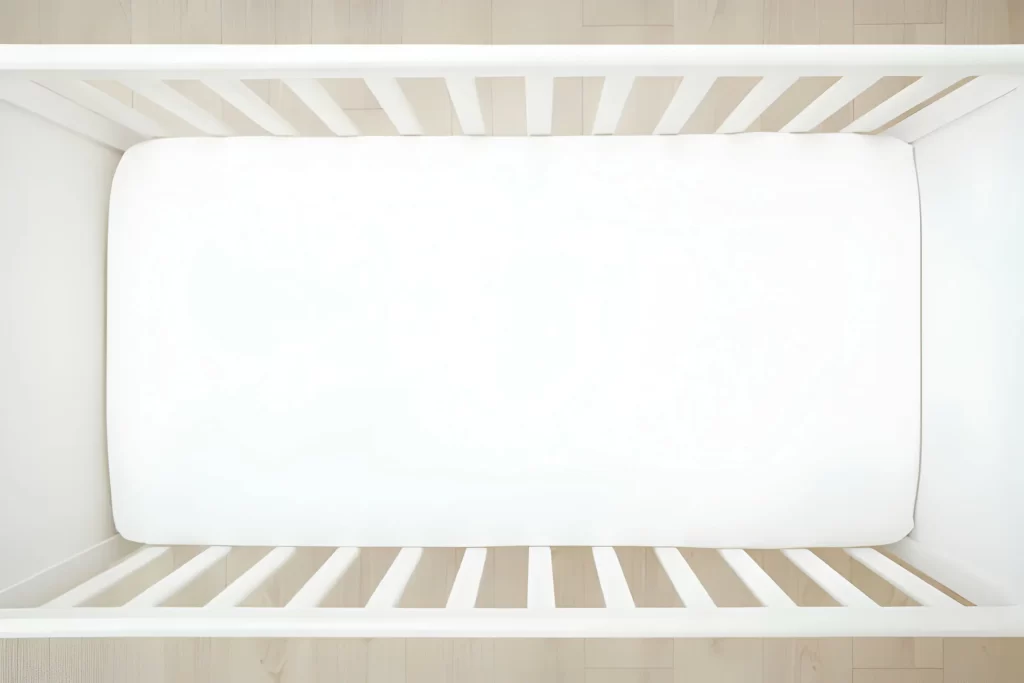
Custom-sized mattresses for antique cribs are hard to find. Ill-fitting mattresses increase the risks of entrapment or falls.
Despite their nostalgic appeal, avoid repurposing family heirloom cribs. Play it safe by purchasing a new metal crib that meets rigorous current guidelines.
Weighing the Pros and Cons of Metal Cribs
Metal cribs have advantages and disadvantages compared to popular wood and convertible cribs. Let’s break down the key pros and cons:
| Pros | Cons |
| Extremely durable and long-lasting through multiple kids | Metal bars conduct cold and noise when the baby moves |
| Easier to sanitize and clean than wood | Industrial looking to some parents |
| Impressive strength that doesn’t weaken over time | Can’t convert to toddler bed like some models |
| Stylish designs like wrought iron, brass, or chrome | Heavier than wood if needing to move rooms |
| Good value and price point compared to wood | Paint/coatings can contain toxins if not organic |
| Hypoallergenic and won’t absorb odors/fluids like wood | |
| More eco-friendly with minimal toxins |
The biggest tradeoffs are style and temperature. But on safety and durability, metal cribs perform extremely well when quality-made.
What Parents Need to Know About Nursery Crib Safety
Focusing solely on the crib variety misses the bigger picture of building safe sleep habits. Following these guidelines reduces SIDS risks no matter what type of crib you choose:
Safety Tip #1: Put Your Baby to Sleep on Their Back
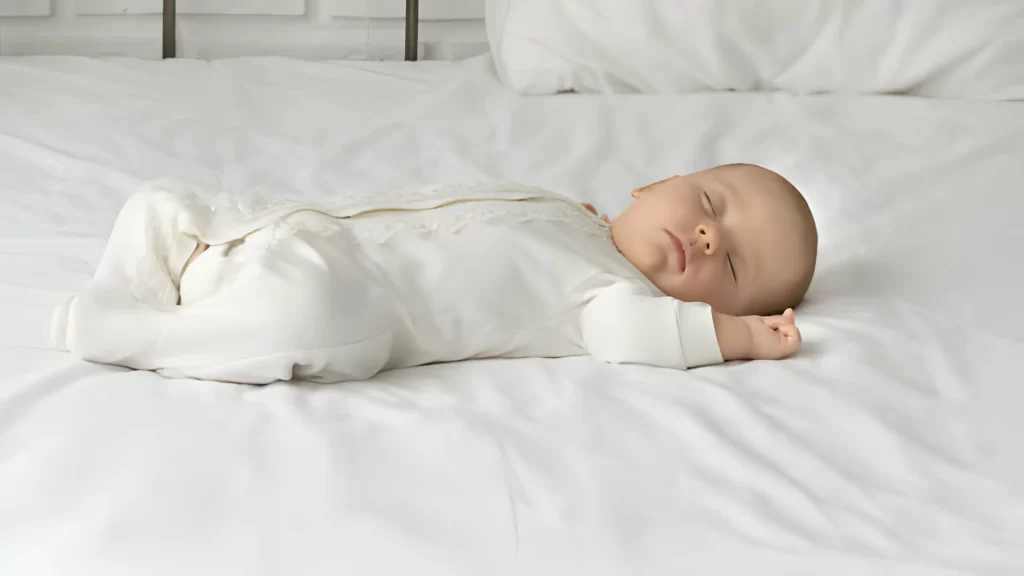
The American Academy of Pediatrics advises back sleeping to avoid suffocation. Always put your baby down for sleep on their back, not their stomach or side.
Safety Tip #2: Use a Firm Crib Mattress
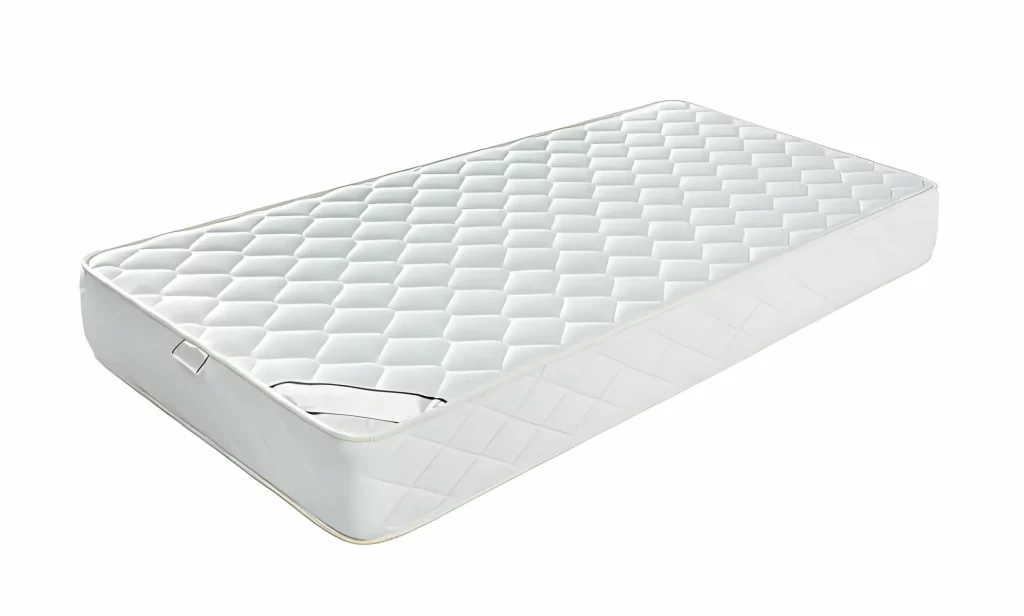
Skip plush, pillow top mattresses which raise the risk of SIDS in babies. Stick with the firm mattress included in your crib.
Safety Tip #3: No Loose Bedding
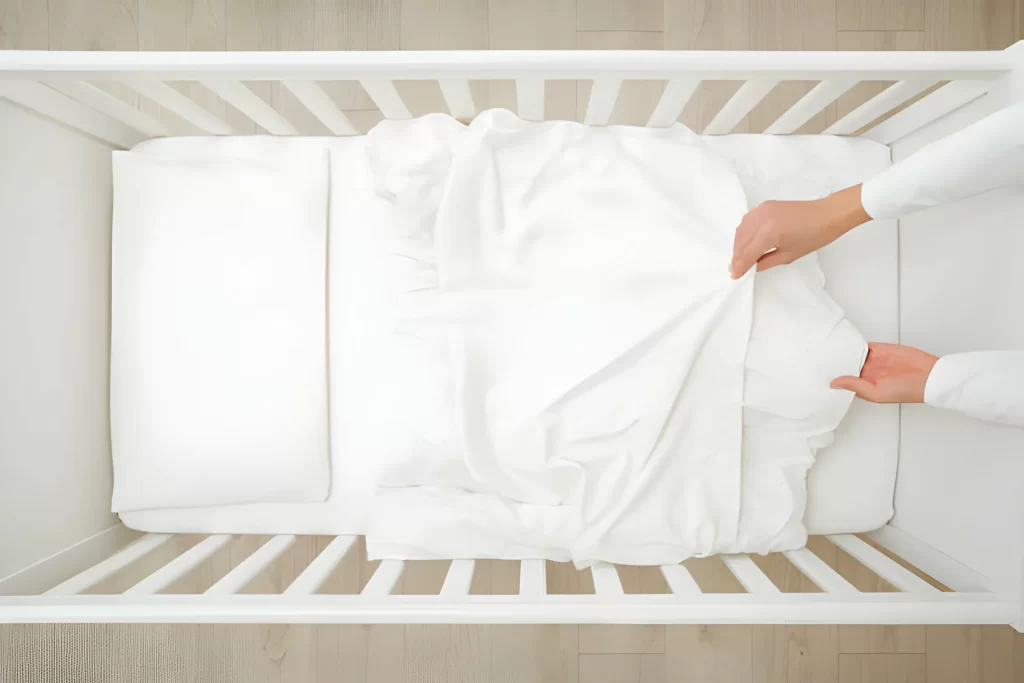
Pillows, blankets, bumpers, and other soft bedding seem cozy but can shift and block your baby’s breathing.
Safety Tip #4: Monitor Recalls
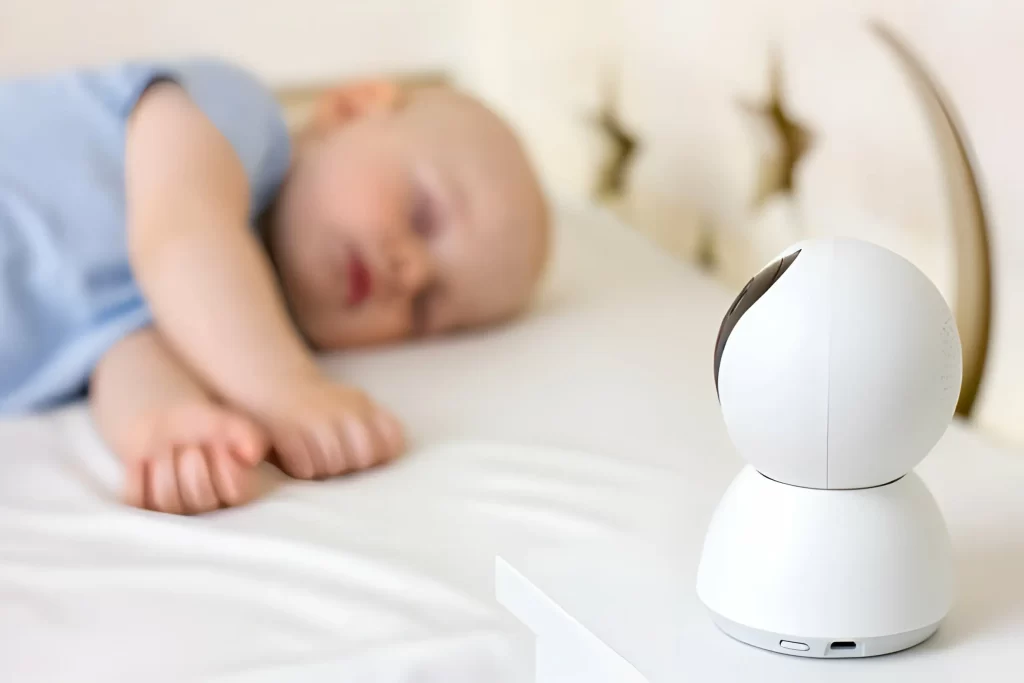
When buying a crib, double-check that the model isn’t on the CPSC’s recall list due to past safety issues. Register your crib to get updates on any future recalls.
Following safe sleeping guidelines reduces risks and helps ensure your baby’s well-being during naps and nighttime. Supervise infants closely and keep up with recommended practices as they grow.
Tips on Getting and Using Metal Cribs
If a metal crib seems right for your needs, keep these tips in mind for an optimal nursery addition:
- Seek quality brands like DaVinci, Dream on Me, or Graco for safety and durability.
- Measure your nursery space carefully for the best-fitting crib size.
- Select eco-friendly, non-toxic paint finishes to limit chemical exposure.
- Look for adjustable mattress height settings to adapt as your baby grows taller.
- Use organic crib sheets for extra warmth against metal bars.
- Add breathable mesh crib liners once the baby can roll over to prevent injuries.
- Frequently check all screws, bolts, and moving parts to ensure proper assembly.
Carefully follow the manufacturer’s instructions for setup. Always supervise your baby in the crib. Lower the mattress to its lowest position once your child can pull up on their own to prevent falls.
What are the Benefits of Getting a Metal Crib?
The principal benefits of opting for a metal crib include:
Superior Durability
Properly cared for, metal cribs often last through multiple children without compromise. They don’t succumb to termites, moisture damage, or normal wear and tear like wood models.
Easy Cleanability
Metal wipes clean with just soap and water. You don’t have to worry about liquids seeping into porous surfaces.
Impressive Strength
Metal cribs maintain their structural integrity year after year. Bolts and joints don’t loosen or weaken with use like with wood.
Enhanced Style
Metal comes in colors like white, silver, espresso, or bronze finishes. Fun powder-coated, wrought iron or hammered metal styles add flair.
Good Value
Well-built metal cribs offer excellent quality and safety at competitive prices alongside standard wood versions.
Temperature Regulation
Metal helps reflect body heat to prevent overheating and dissipate warmth when hot.
Hypoallergenic
Metal won’t absorb allergens, odors, germs, or fluids like wood. This makes metal cribs ideal for babies with allergies.
Eco-Friendly
Metal cribs require less manufacturing toxins and get recycled more often than wood.
Today’s metal crib models minimize risks while offering distinctive durability when used properly. Focus on safe habits and care for long-lasting quality your baby can sleep safely within.
Also Read:
- How to Make an Old Crib Safe for Your Baby
- Why Should Crib Be Away From the Wall
- Does a Crib Come With a Mattress
- Best Crib Alternatives for Your Baby
- Are Iron Cribs Safe for Babies
- 100 Baby Girl Names You Will Love
Final Thoughts
Modern metal cribs sold in the U.S. must comply with stringent federal safety requirements. Carefully check for a snug mattress fit, safe slat spacing, and no decorative cutouts. Avoid antique drop-side or painted cribs with potential lead risks.
Combine sturdy metal construction with recommended safe sleep practices like back positioning and firm mattresses. Then watch your baby snooze soundly! With attention to quality and safety precautions, metal cribs make an excellent baby-proof choice built to last.
